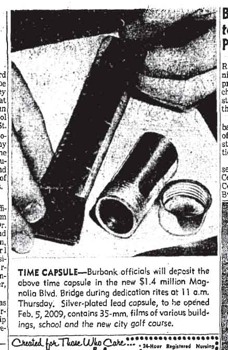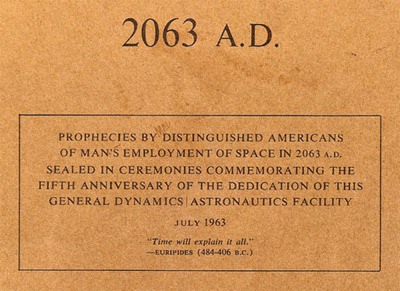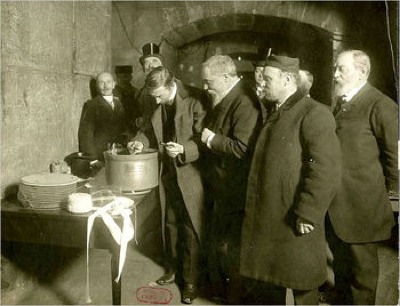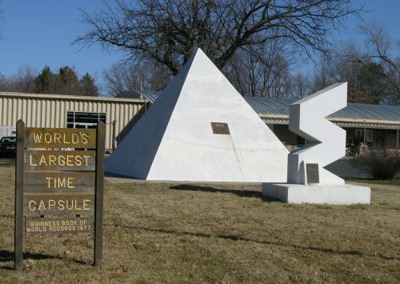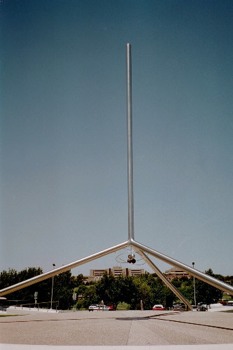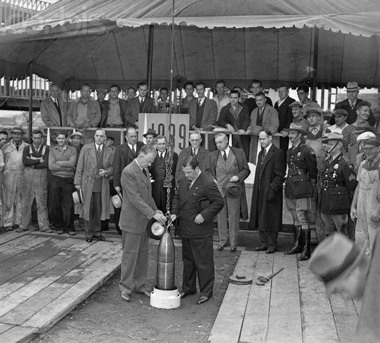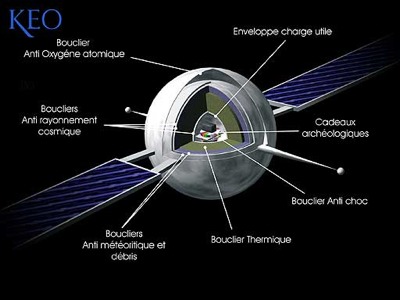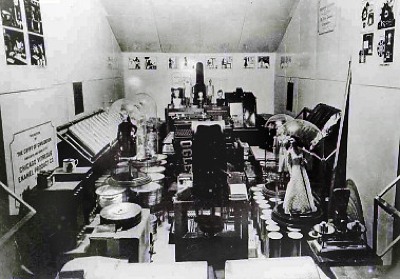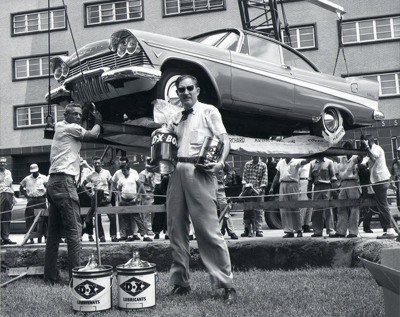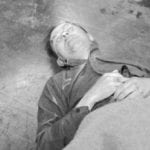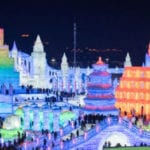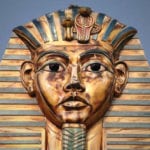 Weird Stuff
Weird Stuff  Weird Stuff
Weird Stuff  Mysteries
Mysteries 10 Tragic Disappearances and Deaths in Joshua Tree National Park
 History
History 10 Ways Childhood Really Sucked in the Old West
 Music
Music 10 Name Origins of Famous Bands from the 1990s
 Religion
Religion 10 Biggest Turnarounds by the Catholic Church
 Weird Stuff
Weird Stuff 10 Unbelievable Times Laws Had Unintended Consequences
 Humans
Humans Ten Historic Women Who Deserve Way More Credit Than They Got
 Movies and TV
Movies and TV 10 Films That Spawned Major Lawsuits
 History
History Ten Times Towns Were Wiped Off the Face of the Earth
 Creepy
Creepy 10 of the Most Disturbingly Haunted Public Houses in the UK
 Weird Stuff
Weird Stuff 10 Niche Subcultures That Are More Popular Than You Might Think
 Mysteries
Mysteries 10 Tragic Disappearances and Deaths in Joshua Tree National Park
 History
History 10 Ways Childhood Really Sucked in the Old West
Who's Behind Listverse?

Jamie Frater
Head Editor
Jamie founded Listverse due to an insatiable desire to share fascinating, obscure, and bizarre facts. He has been a guest speaker on numerous national radio and television stations and is a five time published author.
More About Us Music
Music 10 Name Origins of Famous Bands from the 1990s
 Religion
Religion 10 Biggest Turnarounds by the Catholic Church
 Weird Stuff
Weird Stuff 10 Unbelievable Times Laws Had Unintended Consequences
 Humans
Humans Ten Historic Women Who Deserve Way More Credit Than They Got
 Movies and TV
Movies and TV 10 Films That Spawned Major Lawsuits
 History
History Ten Times Towns Were Wiped Off the Face of the Earth
 Creepy
Creepy 10 of the Most Disturbingly Haunted Public Houses in the UK
Top 10 Incredible Time Capsules
I have always loved the concept of time capsules and even made one when I was a kid out of a shoebox and buried it in my backyard. My interest was stirred again when I recently read about a small time capsule that was opened not far from where I live. So I thought it might be interesting to research some of the larger and more famous ones for a list. The term “time capsule” wasn’t around until 1937 and its original purpose was to communicate with people in the future at a particular time or date. Over the years the term is now used to describe “unintentional discoveries” such as objects from archaeological digs or items found in the cornerstones of buildings with no exact dates when they should be opened. (I guess this would also apply to my buried shoebox). This list includes only “intentional discoveries” meaning time capsules with definite dates or a time period when they should be opened.
This is a very small time capsule compared to the others but I wanted to include it because it inspired the list. The 50 year old newspaper clipping above describes a silver-plated lead capsule containing 35-mm films. The capsule was placed in the Magnolia Boulevard Bridge in Burbank California when it was built in 1959 and was to be opened 50 years later. City officials didn’t know the capsule was due to be opened until a local historian came across the 1959 newspaper article a few weeks earlier. Workers removed the bridge dedication plaque and noticed a dark patch of concrete and then freed the capsule. The capsule contained 47 photos of the city as well as some predictions of what life would be like in Burbank in 2009.
Interesting Fact: One of the predictions was that people would be making “short-haul” flights in “vertical take-off” crafts. You can see the 50 year old pictures and read the rest of the predictions here.
The Yahoo! Time Capsule is a time capsule project where users contribute to a digital legacy of how life was in 2006. At the time of the closing of the capsule on November 8, 2006 the capsules total number of submissions was 170,857. The highest number of contributions, (32,910) came from the 20-29 age group. The digital collection of submissions was entrusted to Smithsonian Folkways Recordings based in Washington D.C. where it will remain until Yahoo!’s 25th Birthday in 2020. The Time Capsule hopes to capture the thoughts and feelings of the world in 2006 as an exercise in electronic or digital anthropology.
Interesting Fact: It is thought that the capsule represents one of the largest compilations of digital media of its kind in the world. You can learn more about the Yahoo Time Capsule here.
In 1963 a time capsule was made commemorating the fifth anniversary of the General Dynamics Astronautics facility in San Diego, California. It was to be opened 100 years later in 2063. Among the items in the capsule was a booklet called 2063 A.D. The booklet contains predictions by scientists, politicians, astronauts and military commanders about the state of space exploration in the year 2063. It is believed that only 200 copies were printed. Unfortunately in the late 1990s the building was torn down and the time capsule was destroyed. Fortunately a few remaining copies of 2063 A.D. sill existed and were able to be reproduced.
Interesting Fact: Here are a few of the interesting predictions: John Glenn, astronaut: “We will have discovered natural resources we did not know existed in the year 1963 and (discovered) an anti-gravity system.”
William Pickering, astronomer: “There will be travel at relativistic (light-speed) velocities to the nearby stars.”
Fred Whipple, astronomer: “The control of fusion in 1977 and the use of ordinary hydrogen in 1995 led soon to a comparatively infinite supply at relatively low cost.”
You can read the entire booklet here.
On Christmas Eve 1907 a group of men gathered beneath the Paris Opera and carefully wrapped two lead and iron containers containing 24 recorded discs. Each were sealed and locked in a small storage room with a note that read “This will teach men 100 years from now about the state of our talking machines and the voices of the principal singers of our times” In 1912 two more urns were added to the archive plus a hand-cranked gramophone and instructions on how to use it. The project was the idea of Alfred Clark who was the founder and president of EMI’s ancestor, the International Gramophone Company. In 1989, during the installation of air-conditioning it was discovered that the archive had been broken open and one of the 1912 urns was empty and the gramophone was missing. The remainder of the archive was immediately transferred to the National Library of France in Parris. At the end of 2007 the archive was opened. Apart from those missing, the discs were undamaged. It was decided that the records should remain un-played to avoid physical contact with the discs. Since precise details of which discs were in the archive were documented, copies of the same discs available from other archives were used to be digitized.
I just wanted to add that the fact that they didn’t play the actual records and used existing copies, in my opinion kind of takes the romance out of the whole thing.
Interesting Fact: Some were not impressed with the old masters. François Le Roux, a Paris Opera baritone and teacher, said that the old techniques grated on modern professional ears. He also said most of them would not get past the quarter-finals in a contest nowadays. [JFrater: In contrast to Le Roux’s opinion, when I was studying opera I was very interested in the great voices of the past and frequently listened to the singers. Their technique was very different to now and often not as polished, but they were masters of emotional performance which is the most important aspect of performance singing in my opinion. Considering that some of these great recordings are of people who performed in the premieres of works by Puccini etc, we have much to gain by studying them.] The recordings of the Paris Opera Vaults were release earlier this year. You can judge for yourself and listen to several of the recordings here.
This time capsule buried in Seward, Nebraska claims to be the largest in the world and is the work of Harold Keith Davisson who was a local celebrity, store owner, and town character. Davisson was not that concerned with the far-distant future but was mostly thinking about his grandkids and to show them what his life was like in 1975. He also wanted his time capsule to be the biggest one in the world. The 45-ton vault was buried and sealed in 1975 on the front lawn of his home furnishings and appliances store. According to his daughter the time capsule has an eclectic assortment of 5,000 items, including a pair of bikini panties, a man’s leisure suit and a brand-new Chevy Vega, (the cheapest car he could find). The capsule will be opened on July 4, 2025.
Interesting Fact: To keep up with larger time capsules Davisson built a second time capsule, in 1983 directly over the first one so there would be no question as to whose time capsule was the largest in the world. In the second time capsule Davisson entombed another car, a beat-up 1975 Datsun or Toyota (no one can remember which) to show what society does to a car in ten years. Davisson died in 1999 at the age of 91.
In 1968 four time capsules were sealed in Amarillo Texas commemorating the 100th anniversary of the discovery of helium. Amarillo has been the center of activities related to helium since the government purchased the helium-rich Cliffside Gas Field in 1927. The time columns were filled with books, documents, and various artifacts that will tell future generations about life in 1968. The caps are welded on and the contents sealed in a helium atmosphere. Each time column will be opened after durations of 25, 50, 100, and 1000 years. The first time column was opened in 1993 and signifies man’s dependence on natural resources. The 50-year capsule symbolizes industry and its use of natural resources. The 100-year capsule represents science and its development of natural resources. The 1,000-year capsule represents history and human efforts toward conservation.
Interesting Fact: One of the items in the 1000 year column is a passbook for a $10 savings account from an Oklahoma City bank, which draws 4 percent interest compounded annually until 2968. When the 1,000-year Column is opened the account will be worth over $1,000,000,000,000,000 ($1 quadrillion)
In 1968 two Japanese companies, Panasonic Corporation and The Mainichi Newspapers, agreed to undertake a joint time capsule project in celebration of the Japan World Exposition 1970. Two time capsules identical in every detail were buried adjacent to Osaka Castle. The lower capsule will remain buried for 5,000 years. The upper capsule (A control capsule) was opened in 2000 to examine the condition of its contents. After undergoing laboratory testing it was reburied and will be opened every 100 years thereafter so that the latest preservation techniques can be used to ensure their safekeeping. The 2,090 items in the capsule were chosen by a team of scientists, engineers, and historians that reflected everyday life in 1970. Other items include a silk condom, false teeth, a glass eye, insects encased in resin, an origami instruction book, handcuffs and counterfeit money.
Interesting Fact: A contest was held among Japanese schoolchildren to write a letter addressed To the People living 5,000 from now. The winner was a fourth grader from Tokyo who wrote: “How are you, people of 5,000 years from now? I wish I could live again in your age but I am quite happy now. I have kind parents and also a sister with whom I quarrel with once in a while. We must do our best until the next age takes over. Goodbye from 5,000 years in the past.”
The Westinghouse Time Capsules are two time capsules prepared by the Westinghouse Electric & Manufacturing Company. The first was created to promote the 1939 New York World’s Fair and the second for the 1964 New York World’s Fair. Both are buried at the site of the fairs 50 feet below in Flushing Meadows Park. The Capsules are constructed from an alloy made of tempered copper, chromium and silver called Cupaloy. The two capsules are to be opened at the same time in 6939 AD, five thousand years after the first capsule was sealed. The 1939 contents were divided into five basic areas: small articles of common use, textiles and materials, miscellaneous items, essay on microfilm and newsreels. The 1965 capsule five areas include articles of common use, atomic energy, scientific developments, space and other.
Interesting Facts: The 1939 Capsule also contains a message from Albert Einstein which reads: Our time is rich in inventive minds, the inventions of which could facilitate our lives considerably. We are crossing the seas by power and utilize power also in order to relieve humanity from all tiring muscular work. We have learned to fly and we are able to send messages and news without any difficulty over the entire world through electric waves. However, the production and distribution of commodities is entirely unorganized so that everybody must live in fear of being eliminated from the economic cycle, in this way suffering for the want of everything. Further more, people living in different countries kill each other at irregular time intervals, so that also for this reason any one who thinks about the future must live in fear and terror. This is due to the fact that the intelligence and character of the masses are incomparably lower than the intelligence and character of the few who produce some thing valuable for the community. I trust that posterity will read these statements with a feeling of proud and justified superiority. You can see a complete list of all the contents of the 1939 and 1964 capsules here.
KEO is the name of a proposed space time capsule that will be launched in 2010 or 2011. There have been previous spacecrafts carrying time capsules of earth’s existence sent into space but what makes the KEO Satellite different is it will be designed to return back to earth 50,000 years later. The KEO project was conceived in 1994 by French artist-scientist Jean-Marc Philippe. If this ambitious project is realized the KEO will carry a drop of human blood chosen at random encased in a diamond, samples of air, sea water and earth and the DNA of the human genome. The satellite will also carry an astronomical clock, photographs of people of all cultures and an encyclopedia of current human knowledge.
Interesting Fact: The Satellites name is supposed to represent the three most frequently used sounds common to the most widely spoken languages today, K, E and O. Also, every person is invited to write a message addressed to the future inhabitants. The deadline is December 31, 2009. Messages can be posted here.
This is at the number one spot because the Crypt of Civilization is considered by many as the first modern time capsule even though it wasn’t called a time capsule at the time. It helped inspire both the name as well as the Westinghouse Time Capsules. In 1940 in the basement of Phoebe Hearst Hall at Oglethorpe University in Georgia, a stainless steel vault door was welded shut. Behind the door is a 20′ x 10′ waterproofed room containing a collection of once-modern day artifacts placed there by men and women from the years 1937 to 1940.The whole concept was thought up in 1936 by the former president of the University Dr. Thornwell Jacobs. While teaching and researching ancient history Jacobs was struck by the lack of information on ancient civilizations. He thought for those who might study our civilization in the future they would have to have accurate and full records. Because the first known date in recorded history, 4241 B.C. (6177 years previous) Jacobs suggested that the Crypt be sealed until 6177 plus the years that have passed – thus setting the year for the Crypt’s reopening at 8113.
Interesting Fact: The sensitive items in the crypt were sealed with stainless steel receptacles with glass linings. Before they were sealed, all of the air was removed from the containers and replaced with nitrogen to prevent oxidation of the contents. You can see an inventory of items in the Crypt here.
You can’t have a time capsule list and not include this one! In 1957 a large concrete vault was sealed at the Tulsa County Courthouse to be opened in 2007 to celebrate Oklahoma’s Centennial as a state. The organizers of the event thought it would be a really cool idea to burry a brand new Plymouth Belvedere because it “exemplified an advanced product of American industrial ingenuity with the kind of lasting appeal that will still be in style 50 years from now”. Items buried with the car included jugs of leaded gasoline, a change of oil and a case of Schlitz beer. The automobile was to be awarded to the person who guessed nearest to the city’s 2007 population. If he or she was not living, the award would go to the heirs, along with the proceeds from a $100 trust fund. The guesses were put on microfilm and sealed in a steel capsule. Unfortunately when it was opened it was obvious that during the 50 years the vault had sprung a leak. The car was found in four feet of water almost completely rusted with rotting upholstery and most of its contents ruined. You can see a picture of the car here.
Interesting Fact: The person that was closest to the 2007 population and the winner of the 1957 Plymouth Belvedere was Raymond E. Humbertson. He guessed 384,743 and was off by 2,286 people, as the population of Tulsa in 2007 was 382,457. Unfortunately Humbertson died in 1979 and his wife also passed away in 1988. His closest living relatives are his two elderly sisters who will take ownership of the prize. You can watch a great clip of the car and vault being prepared 50 years ago here.
I also wanted to mention there were plans to restore the car (Mss. Belvedere). A web site was even set up to keep everyone posted on her progress but there have been no updates for some time. Attempts to contact the company doing the restoration have also been unsuccessful. Maybe a Listverser from Tulsa or anywhere else can help us out with an update.
